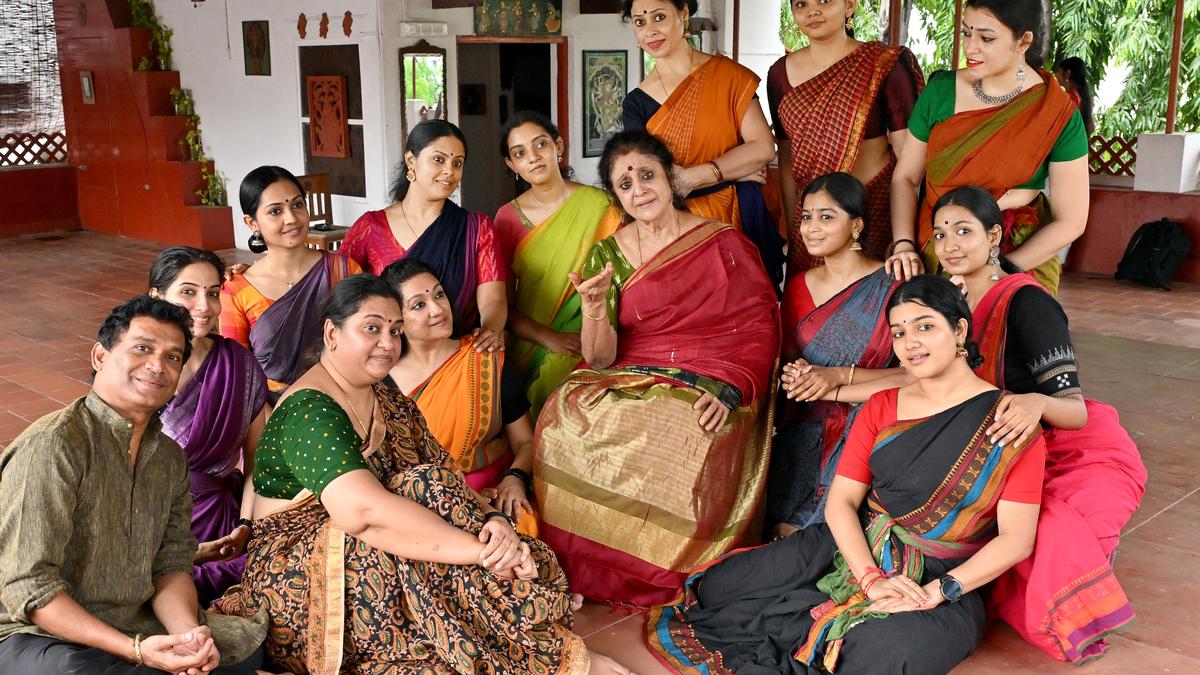
A special event to mark the Golden jubilee of Chitra Visweswaran’s dance academy
The Hindu
Chitra Visweswaran’s dance school turns 50
No. 10, Sri Labdi Colony in Chennai is bustling with activity as preparations are on for the celebration of Samanvay – 50 years of the Chidambaram Academy of Performing Arts (CAPA). It is the elegant home of Bharatanatyam exponent, guru and arts administrator Chitra Visweswaran, who steps into her 75th year on October 12. It also doubles up as the artistic space for CAPA.
Like the famous female trinity in Carnatic music, the names of veteran dancers Padma Subrahmanyam, Sudharani Raghupathy and Chitra Visweswaran come to mind in the field of natyam.
Chitra says, “Ever since I can remember, dance has been an intrinsic part of my existence”. She was initiated into dance at the age of three, by her mother Rukmani Padmanabhan, and then put through her paces in Western classical ballet in London. An eclectic background covering Manipuri, Kathak, Rabindra nritya and sangeet, Carnatic music and theatre, propelled Chitra on an artistic voyage of discovery at a young age in Kolkata. At the age of 10, she came under the tutelage of Tiruvidaimarudur T.A. Rajalakshmi and had her arangetram on April 12, 1962.
In 1970, after graduating in English Honours from Calcutta University, Chitra received the National Scholarship for advanced study in Bharatanatyam from the Government of India. She therefore relocated to Madras and spent four years learning from the doyen Vazhuvoor Ramaiyya Pillai. “If T.A. Rajalakshmi laid a strong foundation of grammar and technique, Vazhuvoorar awakened me to unimaginable, heights of creativity. His teaching methods were very unorthodox. A great visionary, vadyar never viewed or taught Bharatanatyam at a mere physical level. He used analogies and awakened one to seek inspiration from Nature and life. ‘Think, think!’ he would say. To this day I follow his approach while teaching. At CAPA, it is my endeavour to help my students develop the seeing eye, the hearing ear and the thinking mind as well.”
The scholarship period had ended and Ramaiyya Pillai was unable to travel to conduct Chitra’s concerts. On a somber note she recalls: “After much emotional trauma on both sides, he finally agreed to allow me to work independently, but circumstances prevented him from according permission for anyone else to perform nattuvangam for the pieces he had taught me. Those days there were hardly any freelance nattuvanars. So there I was, out on a limbo, with barely a month to go before my next performance. With this, a new chapter in my life began. I worked on fresh margams and extension of repertoire. And given my background, I set out on a voyage of discovery, to widen my horizons in my chosen field.”
Soon, Chitra chartered her own course combining all that she had imbibed from her gurus and her knowledge of the cognate forms of arts, imbuing them with a scholastic approach and developing an individualistic philosophy of movement. She was among the first to tour extensively abroad, and in the process equipped herself and her students in nattuvangam, acoustics and lighting design in a professional way.
Her husband, R. Visweswaran, gave up a corporate career to totally involve himself in music. With his knowledge of the Carnatic and Hindustani systems as also Western classical, he started singing and composing music for her dance. Together they created several solo pieces, thematic presentations and group productions. Her style stands out for its verve, light leaps, flowing movements punctuated by pulsating pauses, quicksilver head and eye movements, play of rhythm and cross rhythms, mimimalistic yet elegant jewellery and costumes, and intelligent coverage of space, subtle yet communicative abhinaya — all conveying the joy of dance.













